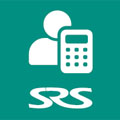Module Accounting Simple and Binary
 Tool for bookkeeping, which meets the basic requirements of any company transparent and supporting management decisions. The system responds to the requirements of tax legislation and provides its users with the maximum amount of relevant data to create a comprehensive view of the company.
Tool for bookkeeping, which meets the basic requirements of any company transparent and supporting management decisions. The system responds to the requirements of tax legislation and provides its users with the maximum amount of relevant data to create a comprehensive view of the company.

Accounting module offers reliable and transparent solution.
Evidence of receipts captures the movements of cash. Supplementing the list with cash management and foreign exchange cash. The system allows you to print and see the cash book or revenue and expenses in cash at any time.
Also an important part is evidence of contracts, where it is possible to register all necessary data, payment schedules and subsequently allow automatic billing of those contracts. It is possible to see all documents related to contracts, invoices and orders made under the contract.
This is an automatic processing of VAT tax returns and tax summary statement, with manual inclusion / exclusion of documents. Processing output for the tax office printing to the original form and generate an electronic report in XML format.
Activities related to accounting can be optimized and eliminate error by using predefined account coding.
Bulk billing functionality will speed up the individual activities.
Optimization of activities is appreciated when working with the bank, where users easily implement electronic communication with the bank - import or export. Export file which can be loaded into home banking application. System whether the invoice was already given to reimbursement.
It is possible to implement domestic and foreign payment order. Of course there is also feedback information - electronic statement sent by the bank, which can imported into the system and processed in bulk.
Users will be surprised by the amount of output reports that can be printed in any accounting period, even retrospectively. Variety of statements, which are set by law defined requirements such as balance sheet, income and loss statement or outputs defined by user requirements based on the information contained in the general ledger.
Accounting transactions are recorded in the books, and look at each document can be accessed from any part of the program, such as.:
- in the log where the accounting entries are arranged by time, chronologically. Using the log can demonstrate record of all transactions in the accounting period. Look at the history of accounting.
- The general ledger - accounting entries are arranged on the material respect, systematically
- the ledger - provides monitoring of regulations and reimbursement obligations and claims against the business partner (business, person, state, office, employee, etc..), in some cases recieved or sent prepayments
For bulk processing the following agendas are prepared:
- Generation of reclassifications of proforma payments
- Generation of tax documents to advance payments
- Generating of reminders
- Generation of penalty invoices
- Generation of tax credits
- Generation of evidence for re-invoicing payments or payment schedules
- The possibility to set up the generation of rules for regular check-recurring transactions such as leasing contracts, leases
